A safety cover is one of the best pool products you can buy. Safety covers look great, protect the pool while keeping kids safe, and they far outlast non-safety pool covers. In addition, they are easier to care for and are very low maintenance. However, installing a safety cover can be a bit tricky and requires extra work compared to installing a winter cover. So let’s discuss safety cover anchors, straps, and how to get your cover safely installed.
Wood Pool Deck Safety Cover Anchors
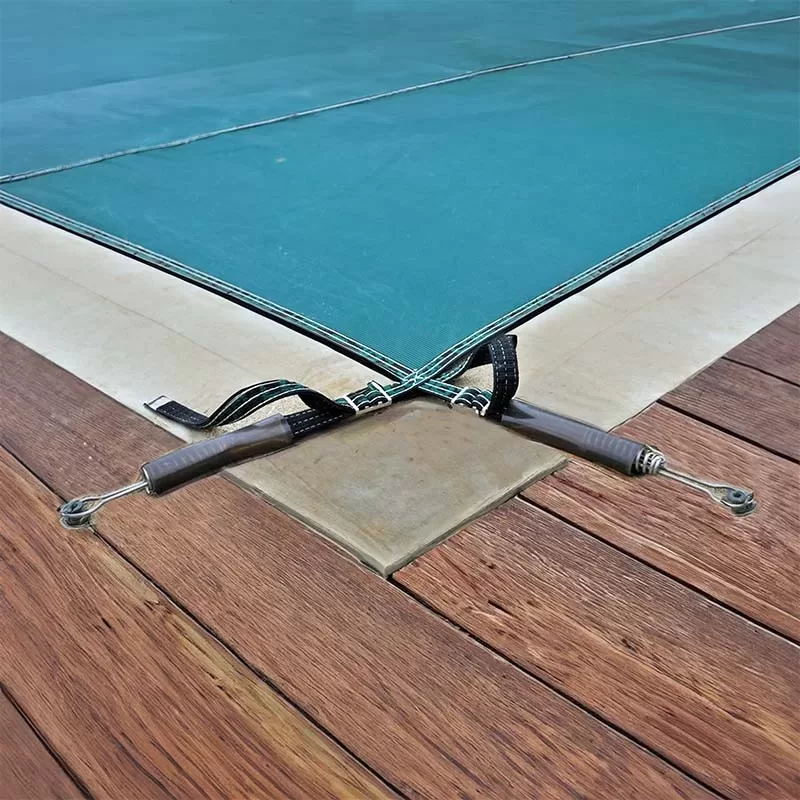
Because wood can rot, or soften with age, a wood deck safety cover anchor is used, which has a wide flange on the top of the anchor, to protect the deck and hold the cover securely with more lateral strength. Installing the flange type anchors is more involved than other anchor types, and I recommend using 2 or 3 power drills, so you don’t have to change bits so often.
First you drill a counter-sink hole, 3/16″ deep, using a Forstner bit of the right diameter, so the anchor flange will sit flush into the wood, and not be a toe-stubbing hazard.
Next, using a 3/4″ wood drill bit, drill a hole in the center, all the way through the wood. Drop the wood anchor into the hole, and then screw in the brass flange screws, using a #2 Phillips screw head. That’s 3 bits, if you are keeping count. Now you can understand why I suggest using more than one drill!
Can you use concrete anchors in a wooden pool deck? No. Doing so not only voids the manufacturer’s warranty, but it is also unsafe.
Concrete Pool Deck Safety Cover Anchors
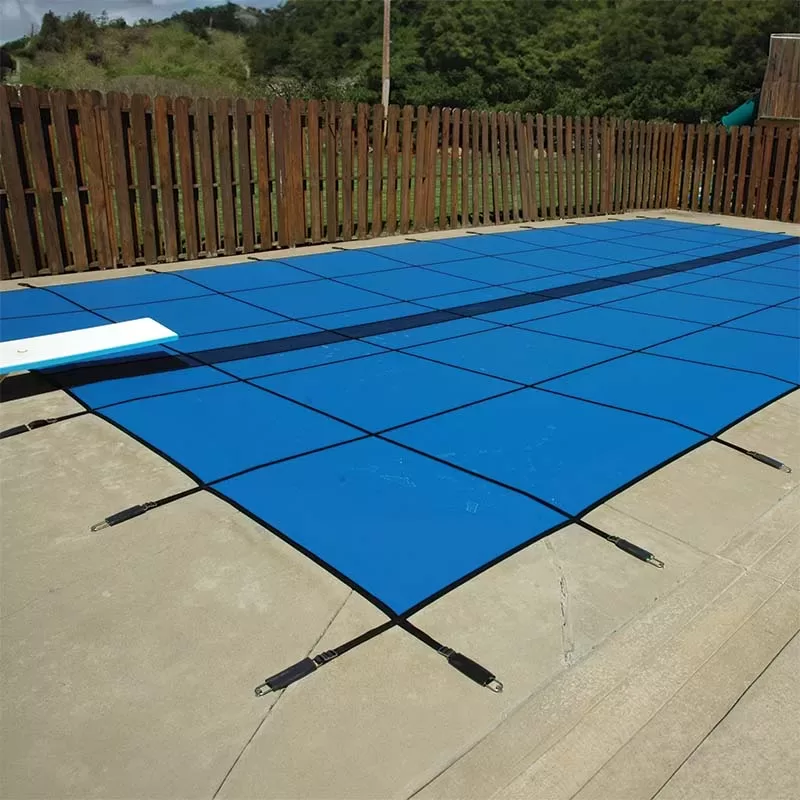
The brass concrete safety cover anchor is the most common type of safety cover pin used. The standard cover anchor is threaded, but Meyco offers a pop-up anchor, which requires only 1/2 turn to raise or lower the anchor.
Brass anchors are 1/16″ wider at the top, and when tapped into the hole, it press-fits into place, holding the anchor body stationary, as you turn the threaded insert up or down.
To install a brass cover anchor, you’ll need a rotary hammer drill with a 3/4″ masonry bit. A sharp, new bit will cut a clean hole; dull drill bits will cause more chipping of concrete around the hole, and can also take twice as long to drill the hole.
Place a piece of sturdy tape around the bit at 2-1/4″, so you know when to stop drilling. Hold on tightly to the drill which may jump if you hit some steel mesh or large piece of aggregate in the deck. Be sure to hold the drill perpendicular to the deck, to create a vertical hole.
After drilling the hole, remove the dust with a blower, wet-dry vac or with a garden hose. Then tamp the anchor into the hole, using a tamping tool, so you don’t damage the hex key hole, or bend the top rim of the anchor.
Paver Pool Deck Safety Cover Anchors
A paver pool deck is made up of interlocking bricks, pavers, stone or ceramic tiles. They are placed over a concrete sub-deck or on a bed of crushed stone or sand. Pavers can be mortared in place, but often are placed tightly together with a steel band on the outer edge.
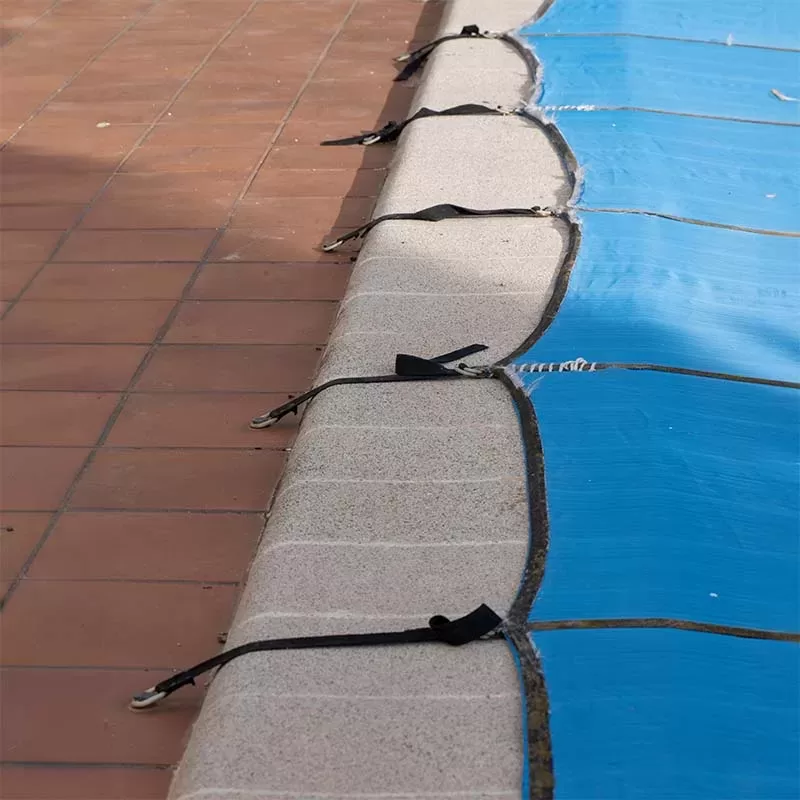
For mortared joints or very tight pavers, you can drill into the joint between 3 pavers, and place the safety cover anchor in the same way as for concrete decks. Always place anchors into a joint, adjusting strap length as necessary to reach the anchor. Drilling directly into a paver (unless you use a core drill), risks paver cracking.
For pavers with some movement, or for a more secure installation, the anchor-in-pipe method is used. A 3/4″ x 15″ aluminum tube, available from your safety cover dealer, is inserted through the deck and into the earth below.
Use an extra long drill bit to open the earth up to the full depth of the tube (aka Lawn Tube), and pound the tube into the hole with a piece of wood on the tube, so the hammer won’t damage the tube. When flush to the deck, pop-in a brass anchor into the top of the tube, and you’re done!
Planter & Grass Anchors
Loop-Loc recommends not more than 30% anchor-in-pipe, but the cover held up fine over the years. Another option is to use a 6″ auger to dig a 15″ hole; insert a PVC pipe into the ground, and fill it with with concrete. Insert the brass anchor into the wet concrete and let it set-up for 48 hours.
Many inground pools have planter areas on the edge of the pool, or no deck at all on one side of the pool. In these cases, the anchor-in-pipe method is used, or also available are 18″ safety cover stakes, suitable when you have just a few straps that run off a short deck, or into a planter. Stakes can be easily removed during pool season, if desired.
Meyco has introduced an improved stake (shown) they call the Garden Stake, with side wings in an X fashion, to hold more securely, even in wet or loose soils.
Installing new or replacement safety cover anchors is a snap – and totally DIY friendly. You can rent drill(s) from any rental shop, and for safety cover hardware – we’ve gotcha covered!

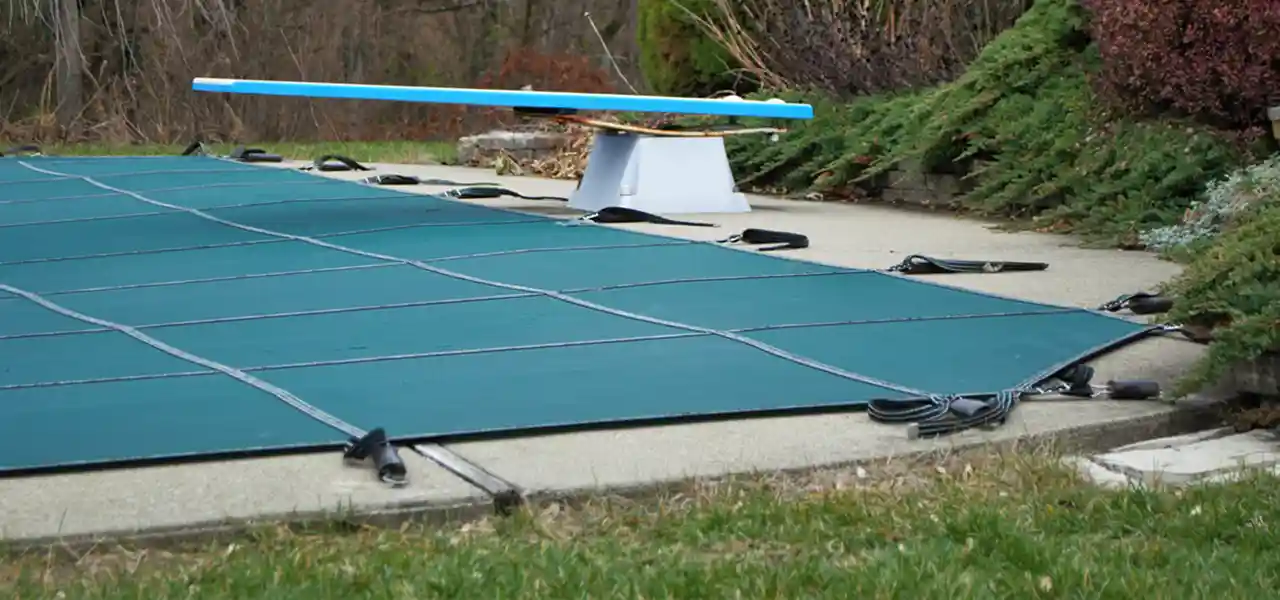
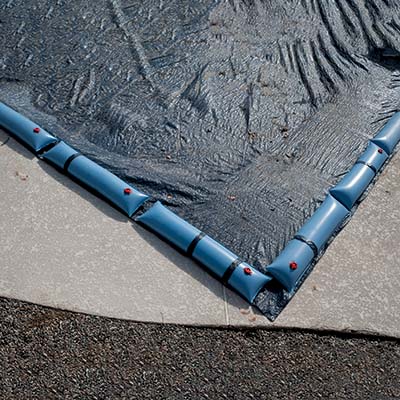
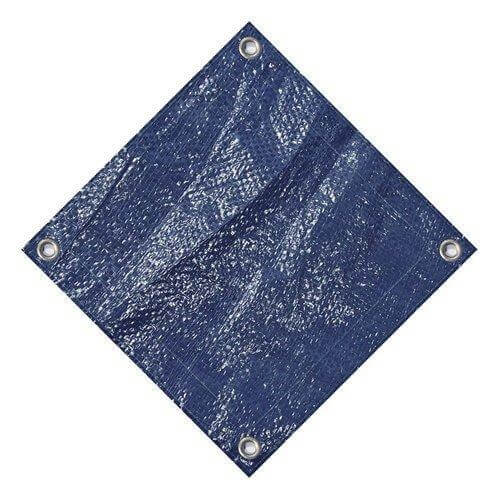
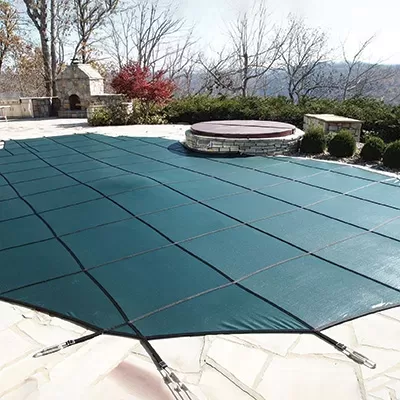


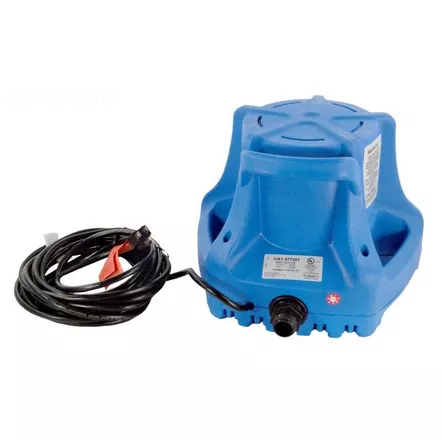

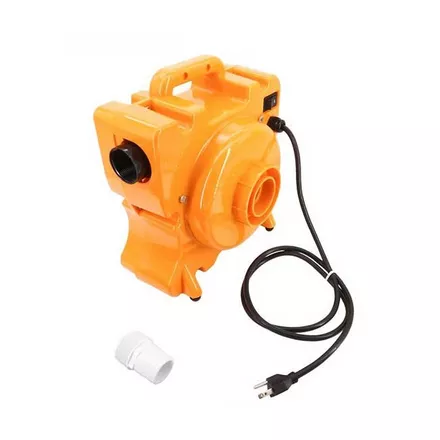
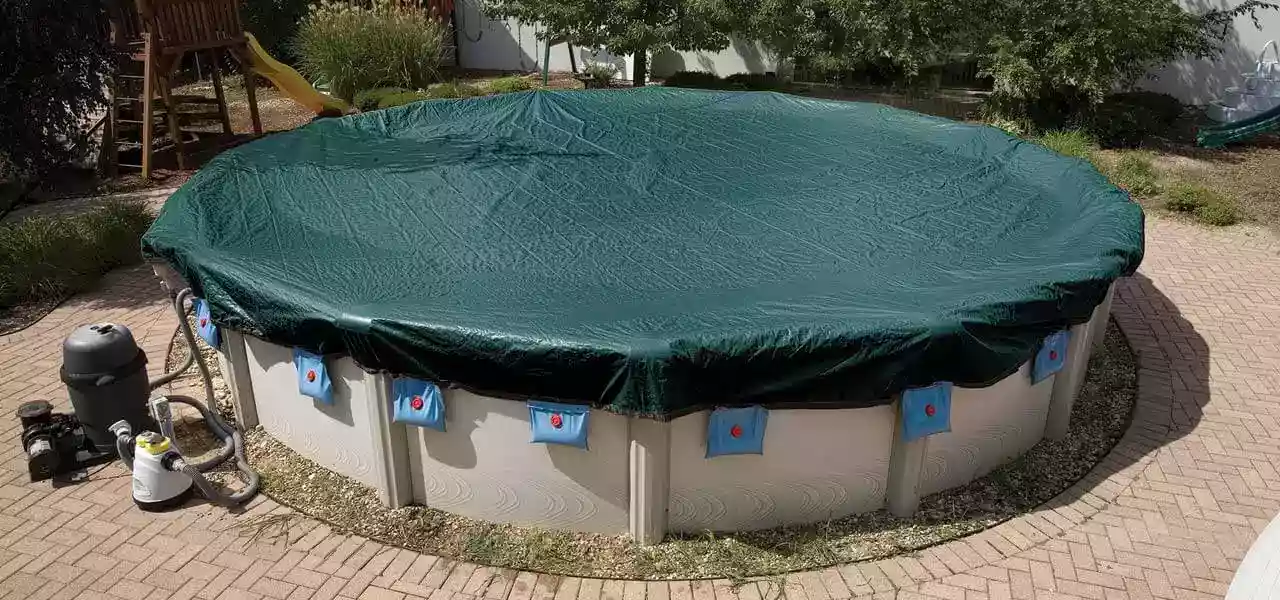
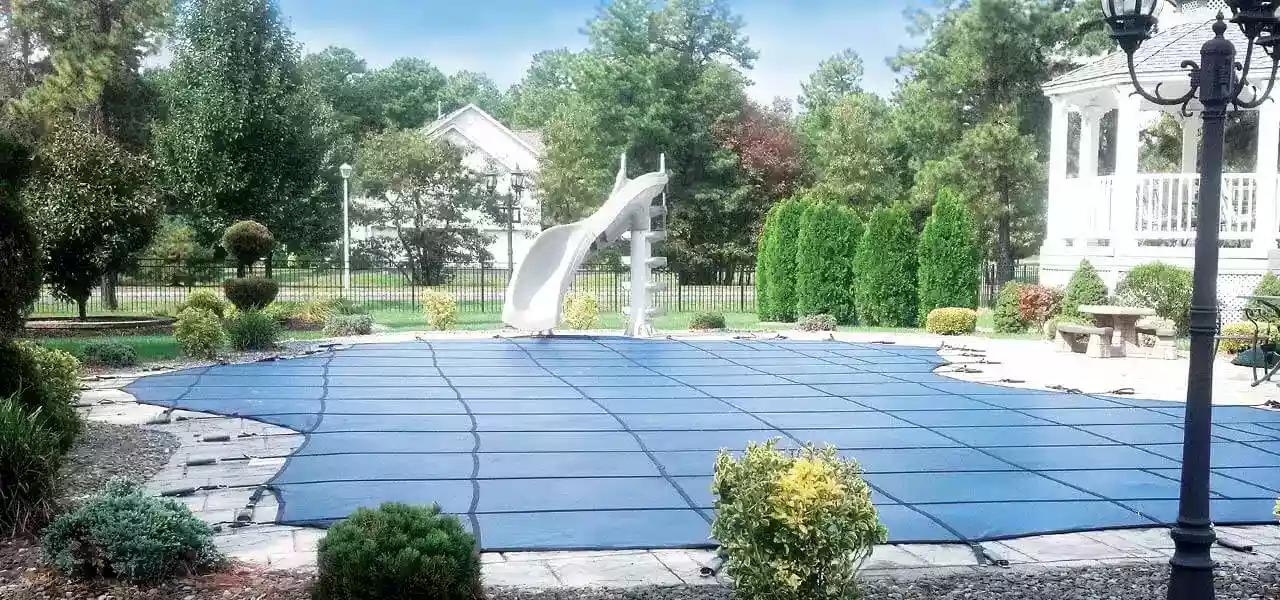
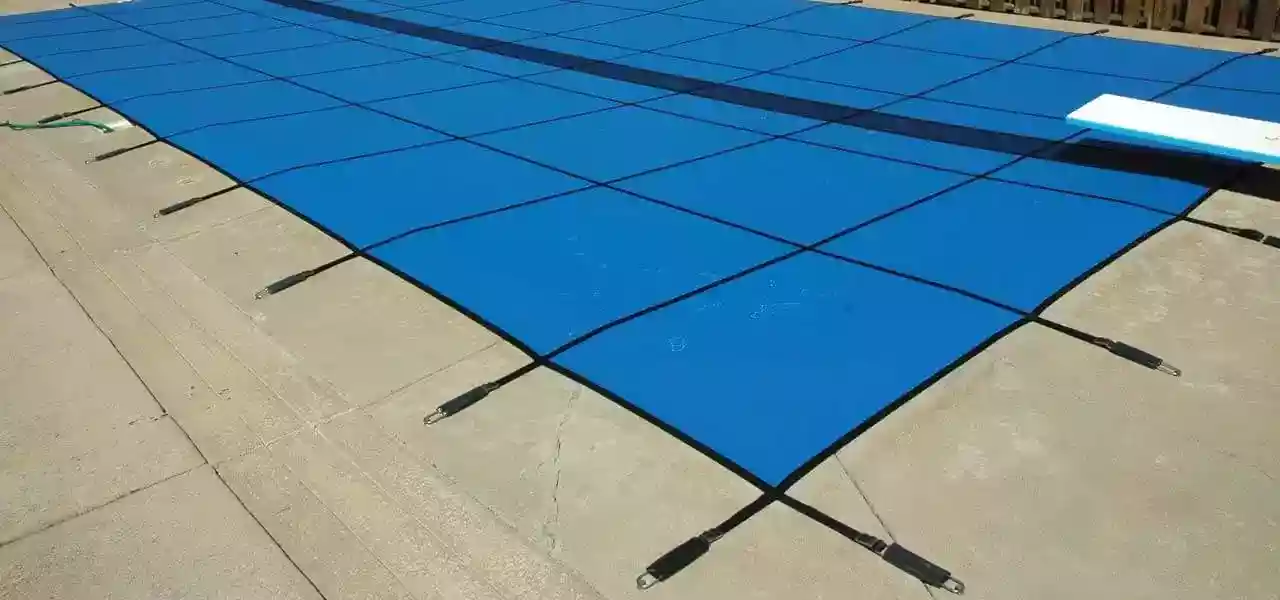
What size drill bit should be used for the joint in the pavers for tube install
Hi Jamie, it is the same size drill bit for concrete anchors, a 3/4″ masonry bit.
I have some natural stone pavers ~1 1/4 thick. Can I use the shorter tube achors (5″) instead of the really long ones?
Hi Flynn, only if the pavers are cemented in place, and mortared between or are laid tightly. If not strongly secured, then 5″ would not work.
Just had a pool crew install my cover, love it, but they did put two straps on anchor for one corner point. Is this okay for the stake to support two straps?
Hi Jeff, sure thing it’s done all the time. Saves time when putting the cover on/off.
Great Article! I have a waterfall on the edge of my pool and the crew that is going to install the cover talked about securing it in the mortar at the bottom of the waterfall. Should I be concerned or is this okay to be done?
Hi Andrew, it’s okay to put the anchors there, no worries.
Once holes are drilled in the concrete for the anchors and the anchors are placed is there any chance of water getting down in the holes/anchors and causing the concrete to crack?
Hi Dana, nope, won’t happen. Don’t give it a second thought.
Hello how close can I drill to the edge of pool?
Hi, well let’s assume a 12″ standard overlap for the pool cover. you could drill at 14″ from the inside edge, and use a D-ring looped onto the strap, or use a 4″ ‘short spring’, and drill 18″ from the inside edge, or with the standard 8″ spring, 22″ from inside edge.
Hi. I am looking to install a cover to protect against any accidents with the pool and my toddler. However, I seem to be unable to find any information on how to deal with the handrail/ladder that is at the deep end of the pool. This is a common feature of pools, but I don’t see this addressed anywhere online. There must be a way to work around it without removing it, right?
Hi Jason, when safety covers are installed for winter, handrails that are within 12″ of the pool’s inside edge are normally removed for winter, if they interfere with the safety cover. If the rail is non-removable (rare but it happens), or if you don’t want to remove it, the cover can be made with a ‘cut-out’ that will allow room for the rail. Cut-outs are an extra $50-$75 or so to have sewn in, but it does make the cover ‘custom’, which increases the manufacture time to 3-4 weeks.
We have a semi inground pool that will have decking on one side that we could anchor to. On the other side the steel wall will be about 8 inches out of the ground. Is there a way we can still use the anchor safety cover?
Hi Amanda, I understand, no deck on one side, and the semi-buried pool is above ground level by 8″. It could be done, yes, you would use lawn tubes or other specialty stakes on the earth side, unless you installed a concrete deck around the outside of the raised side of the pool. This would be a custom cover, and due to the unusual nature of the covering, most cover manufacturers would try to limit the warranty coverage, but no worries, it can work, and you don’t need warranty anyway. It would also be pricey, depending on the size of the pool, it would cost $1500-$3000, but will look great and last for 10-12 years, and of course provide unmatched safety. Contact our custom cover folks to get a quote, or get an instant estimate here…
How long should I wait for the stamped concrete to cure before the pool cover inserts are drilled into the decking?
Hi Jeff, I don’t think you need to wait very long, just so that you won’t leave footprints + a few days. Maybe 1 week total.
Hi, I have a bluestone patio. Underneath the patio is a solid 5inch bed of cement as a foundation. That dried and then bluestone is set in a bed of cement on top of that foundation. Do you suggest the anchor in pipes or just the small brass screws.
Hi Jim, just the anchors are fine. Choose a spot for the anchor with care. If you can lengthen or shorten the strap to go in between several stones, that’s best. A g rout joint of 1/2″ or so, between 2 or 3 stones is best. Avoid going into the stone, especially near the edge, but If you need to go thru the stone, give at least 3″ or 4″ from the edge of the stone, to avoid cracking. Use a sharp (new) masonry drill bit, on a good quality rotary hammer drill. Also, when going thru the stone, give the drill bit a bit of a ‘whirl’, in a circular outward location, just before pulling out, to give the stone a fluted edge at the top. Not necessary when drilling into grout joints.
Should I have concern when drilling for the anchor tubes (i.e. water supply piping)? Thank you.
Hi Richard, yes actually, I once hit a pipe, and had to repair it, which was not too hard, because there was no deck. If you are also installing anchor tubes in the earth (no deck), you may also run the risk, if there are pipes running in that area. In many cases, the pipes are set deeper than 15″, but sometimes not. It’s rare that you will bust thru a pipe, so I would not worry too much about it. If you have some original blueprints of the pool plumbing, you may be able to avoid certain areas, but without ground penetrating radar, you just have to hope for the best!
Great article!! We have an above ground pool with composite deck that surrounds about half of it. I am thinking of using the wood deck anchors and following your instructions. However, we have hollow composite decking and was wondering how these would work. The wall of the deck board itself is only about 3/8” thick. So after counter-sink to allow flange to sit in, there will not be very much deck material underneath the flange. Do you recommend placing a small piece of wood under the composite deck board to allow the anchor extra support? Or will these flat out not work with hollow composite decking?
Hi Bob, 3/8″ is not much! I think your idea to screw on a 2×4 piece under each hole is solid. After drilling the hole, if you can get under the deck, glue and screw a 4″ piece of 2×4 to the underside of the deck, then drill through that, then drill the countersink, and screw in the screws around the flange.
do they have a forstner with a 3/4 in drill bit in the center so i will only take one drill at a time , object drill 1 1/2 in dia and 3/4 in center in one operation
Hi Frank, I don’t think so, I’ve never seen such a bit. It would be a time saver though!
I have an issue that my intended solution is not addressed anywhere.
I have interlocking concrete pavers on a crushed stone basis around the pool. I intend to remove pavers only where the brass anchors are supposed to go, dig and remove additional 4-6 inches of gravel underneath and cement brass concrete anchors into the void created flush with surrounding pavers. Basically I will be creating small concrete foundation for each anchor. Do you anticipate any issues with that solution?
Hi George, that sounds like a lot of work! I would use the anchor-in-pipe method, where the 15″ aluminum tube is pounded into the earth, after drilling a hole with a 7/8″ bit, in between 2 or 3 pavers (where they intersect). Tap the pipe flush with the top of the pavers, and then tap a brass anchor into the top of the tube. No concrete needed. That is the normal way it is done, for a paver deck.
We have an in ground pool and had Azek decking put around the pool area. Can we install the anchors on it or is there some other way to install a safety cover on the pool? Or would it be better to just put a cover with water tubes to hold the cover down?
Hi, use the wood deck anchors, and a safety cover would be great! You install them like a regular wood deck anchor. Use a 3/4″ wood bit, a 1-1/4″ forstner bit to counter-sink, and a Phillips screwdriver bit to tighten down.
We have been using wood deck anchors for years with our safety cover. Now we are planning to replace our decking with PVC. PVC is softer than wood and we are concerned about the anchors either pulling out, or twisting in the decking under snow loads. Is there a larger diameter anchor available which would distribute the force over more area? Any other suggestions? We would, of course, put wood blocking under the PVC and screw down into that, but we are still concerned about the anchor compressing the PVC as it gets pulled toward the pool under a snow load.
Hello, I don’t think you have anything to worry about, I believe that regular wood deck anchors could be used, and without a wood block underneath. But I could be wrong, depending on the strength or thickness of the PVC boards, but if it’s like Trex decking, should be no problem, even with heavy snow load. (but always remember to keep water level in the pool less than 18″ from the pool cover).
Have a raised wall the entire length of the pool…can I place anchors on the top of the beam? If so, how do I add that to the cover measurments?
Hi Tina, with a raised wall, you can either put wall anchors in place, every few feet, at the top of the tile line/bottom of wall, in which a cable is run through all of the eyebolts, and the cover attaches to the cable, with HD SS clips on the underside. This is called the in-the-wall method. The other way is called the up-and-over method, where the cover will rise up from the lower deck, climbing stairs or rocks, to attach to the upper deck. They are not usually attached to the beam, or the top of the raised wall, but anchors are used in concrete deck behind the wall. If there is no concrete wall, you can use anchor-in-pipe method behind the wall. Either way costs about the same, but we can quote it both ways, personally I like the up-and-over method better, but in some cases of very tall walls, it is not possible.
How would you install the cover where one length of the pool has a feature waterfall running the entire length. maximum reveal varies between 3 inches and 9 inches of coping on that side before the wall.
Not looking to drill into the wall either if possible to insert anchors.
Is there a solution or do I need to order a customer cover that has locks closer to the edge of the safety cover?
Hi, in most cases, the manufacturer will install a cable/anchor system on that side of the pool, and cut the cover to meet the shapes of the rock. Where there is coping, you could also use D-rings on the edge of the cover (instead of springs on the straps). It’s very common to install a safety cover on such a pool, but you will have to drill a few anchors, at the bottom of the wall, either into the stones, or into the coping. But you won’t notice them, or other people won’t anyway…
Had a question i was hoping you might have the answer to.i have just installed porcelain paver pool deck on a concrete base.I was wondering if you have had any experience with setting the anchors in a porcelain deck.I am not worried about drilling the holes as a diamond bit should make a precise hole.but i am concerned about tapping the anchors in with the teeth at the top of the anchor.I have tried it on a sample piece and it seems to chip the edges around the anchor do to the denseness of porcelain.Any ideas or thought on this?
HI Peter, no direct experience with that, but what could be helpful is to use the drill bit to slightly bevel the hole at the top, by moving the drill in a circular pattern, once or twice, so that the edges of the drill bit, make the top of the hole just slightly wider, at just the very top of the hole, to reduce chipping. Another idea is to paint or stain the chipped area with a very small brush, applying a matching color, to make them stand-out less. Third idea is to cover the holes with the escutcheon plates or brass trim rings that fit around the anchor, to cover chipping and such.
i have 3ft of concrete deck on 2 sides. Is that enough space for overhang and strap lenght keeping in mind drilling a safe distance from the edge to prevent cracking?
Hi Karen, yes 3′ is perfect. 2′ can be done even. Safety covers will have a 12-15″ overlap, and the cover straps are adjustable from 8″ to 24″, so minimum would be 24-26″ deck width.
Hi, I have a situation where the brass plugs are seemingly popping out of their holes! Perhaps someone drilled the holes slightly too large? Anyway, it seems here that I would WANT to put in some cement or adhesive. Having the brass bass “set” in something would keep them in the holes all winter. Any tips? What product I should use, for example? Thanks!
Hi Randy, possible that the holes are too large, normally just tapping them into the hole with a hammer will solve the problem, if you do need to use an adhesive, I would use thin-set mortar, in a tan/gray color to match your deck color, but not normally needed unless the hole is way too big and the anchor is falling below the deck surface, which happens sometimes with flagstone decks.
When installing pipe tubes into pavers do you need to add an adhesive or liquid cement in the hole to avoid having to tube spin? Also, the pipe tubes I purchased are 1” diameter. Should I use a 1” drill bit?
Thanks
Hi Mark, you should not need to use any cement or adhesive for pipe tubes, but you are right a larger drill bit is useful, especially if going thru a sub-deck, but not much larger, I think 7/8″ works, but your pipes may be bigger, but you want a tight fit into the ground, and thru any sub-deck. Also, drill the holes to tilt the tubes just slightly away from the pool, 2-3 degrees, leaning back…
Lubricant for the inside of anchors? Seems like my installer used something. Thanks
Hi David, no lubricant is used on the anchors, although a light penetrating oil would be best if you wanted to use one, such as 3-in-1 or WD-40. Best practice might be to remove all anchor inserts fully, spray out the body with a garden hose and bottle brush to remove grit and grime, then use a blower to remove the water, allow to dry for a day or so, then reinsert the inserts – dipped briefly or coated with a light oil. Big job, all those steps, but every few years – could be doable, if you wanted to.
my poll has a deck in front and a walk around about 24 inches it is semi in ground and is made out of wood can I use the loop loc for it wood is about 1″thick by 4 1/2 wide pool is aprox 15 x33
Hi Emmo, aboveground pools with complete surrounding wooden decks or aluminum decks CAN use a pool safety cover, as long as the deck is an actual structure with heavy bases set into concrete, and not just something sitting on the ground or less sturdy. When the cover has a heavy snow or ice load, this exerts lateral stress on the deck anchors and if the deck section was not secure, it could flip up. That said, if you have a regular wooden deck in the ground, all around your pool, and above the top rail of the pool, all the way around, you can install a safety cover on your abg pool! They do make special wood deck anchors which are recommended for added strength in the event of aging wood. Aluminum decks have longer straps and brackets that fit over the outside deck edge (no deck anchors).
We currently have concrete decking and want to put a composite deck over it now. It would be on a frame obviously b/c it cannot be put right down on the concrete. Can a safety cover be anchored to the composite decking? Would it be safe since it would be about 6 inches above the concrete?
Hi Christine, sure – you can put safety cover anchors in a composite deck. You can use regular brass cover anchors, but the ‘wood deck’ anchors are more secure in the long run. I assume that the new deck will be sturdily anchored into the concrete. If not, the deck sections could shift or even pull up, when the cover has a heavy snow load. But yeah, safety covers are put in wood decks all the time, no problem.
I currently have a poured cement pool deck that is showing its age. I’m contemplating replacing it with pavers to match nearby patio and retaining wall. Question – the article describes the anchor-in-pipe method as being one option for pavers that be experience some movement but the following section on anchor points in grass points out Loop-Loc recommends no more than 30% of the anchors be of this type. Can you give any advice as to whether the 30% reference is only applicable to anchors in grass, or if it would also apply to pavers? Thank you.
Hi Kevin, sure – valid question. Loop-Loc or others, don’t recommend more than 30% of the covers being in soil or grass, but paver installation is much more secure, and doesn’t apply as much. If your pavers are very loose, use our longer anchor-in-pipe, the 17.5″. That will be plenty secure, even if you do the entire pool. Straps are adjustable and have about 18″ of ‘play’, so you can choose the pipe location that way, adjusting strap length to install the pipe in a location that will give the most support, just behind the center of a paver, or where 3 pavers intersect, or even running thru a paver, if they are thick enough to withstand drilling. Pipes can also be installed inside of slightly larger and deeper pipes, if you want to really secure it, for super heavy snow loads or something, but not usually done. Pipes are also usually installed leaning away from the pool, at 10° or so, not much. The manufacturer may void the warranty also, if you order a cover and tubes at the same time, FYI, but actual warranty issues with safety covers is very low.
Is there a given distance that the anchors should be bored away from the straps on the pool cover so the cover can be stretched tightly?
There is no exact measurement – but generally about 18″ from the edge of the cover. But, it depends on how you have the straps adjusted. Some installers will use a measuring tape, to place the anchors in a straight line (you can also snap a chalk line). When I install safety covers, I start in the corners, and place the anchor about 6″ behind the spring (because the cover is loose at first). ONce the cover is suspended over the pool, I go with about 3″ behind the spring. You can always tighten or loosen the straps later if some straps are loose or springs are too tight (should be 1/3 to 1/2 compressed).
Is there any type of cover to place over the anchors when the cover is removed during the summer months?
Hi Peggy; There are some decorative seashell/fish/star shapes that fit into the hex hole in top of the anchor, made by HPI. But they are not necessary. When the cover comes off, the deck anchors thread down flush into the deck, and no covering is needed.
Great article,really helps.How do you determine how many anchors to use and where to place them. Thank You, John DiGilio
The covers are made of square panels, either 3’x3′ or 5’x5′, and the straps come off the cover at the seams of the panels. So, you don’t have to decide, The cover will come with a certain number of anchors, one for every strap. The anchor is placed where the strap is laying, or a few inches behind the strap (with the spring attached). Essentially, the cover gets spread out so it floats on the water and all the springs are attached. You drill the holes about 3-6″ behind where the spring lays, when pulled slightly. More when the cover is loose, and less after you get the corners, or center line straps connected. Thanks for the questions.
[…] Installing a safety cover on your inground pool takes just a few hours, and then it’s easy-on, easy-off – no more struggling with slimy solid covers and water bags! […]